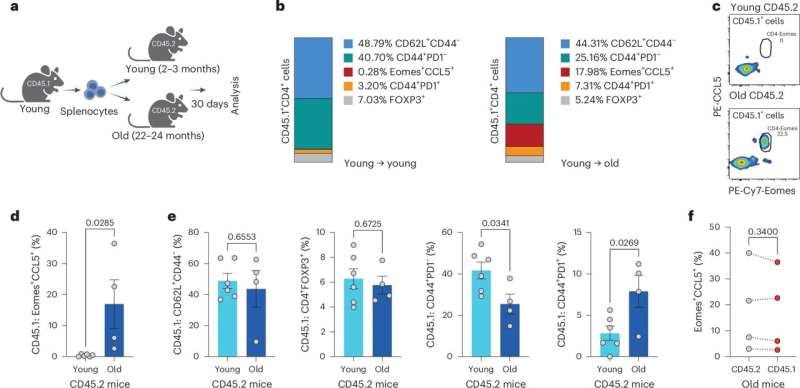Ben-Gurion University of the Negev’s Prof. Alon Monsonego had discovered that T helper lymphocytes, a subset of immune cells which regulate immunity, undergo functional changes with age. These changes can indicate the biological age of individuals, which can be either higher or lower than their chronological age.
Among these changes, the team (the labs of Prof. Monsonego and Prof. Esti Yeger-Lotem) discovered a new subset of T helper cells that accumulate with aging. However, they did not realize how important the role they play until a Japanese study of supercentenarians—those who live well past 100—discovered their immune systems were filled with this subset of T helper cells. Now, Prof. Monsonego believes they are one of the keys to maintaining an age-appropriate immune system.
The findings, led by Dr. Yehezqel Elyahu from Prof. Monsonego’s lab and in collaboration with Prof. Valery Krizhanovsky from the Weizmann Institute of Science, were published this month in Nature Aging.
In the scientific world, aging is a process wherein cells fail to repair the normal wear and tear on them. As a result, people age. Specifically, senescent cells serve a physiological function when kept under proper regulation. However, when they accumulate such as occurs with aging, they can cause inflammation and damage.
A certain fraction of T helper cells that accumulate with aging, surprisingly, were found to have killing properties. So, these T helper cells act to clean out the system of senescent cells. In fact, Prof. Monsonego discovered that if they lowered concentrations of these T helper cells in mice, the mice aged faster and lived for less time.

Interestingly, these unique and unexpected subsets of T helper cells increase with age and play a prominent role in reducing aging.
If T helper cells change with age and are critical for the aging process, then, according to Prof. Monsonego and his team, we need to start tracking people in their 30s to assess the pace of aging as early as possible and follow the biological age of individuals so that early interventions help maintain their normal aging. A gap of decades can grow between biological and chronological ages.
“People say that to reverse aging and ‘rejuvenate,’ we need to reset their immune system like the immune systems of people in their 20s. However, our research shows that this might not be the case. People don’t need a super-charged immune system; they need one that is working properly and appropriate for their stage in life. So, one of the ‘axioms’ of how to reduce aging may be incorrect,” says Prof. Monsonego.
Furthermore, the cells that they discovered can be used for the diagnostic and therapeutic strategies associated with dysregulated aging, longevity, and age-related diseases.
More information:
Yehezqel Elyahu et al, CD4 T cells acquire Eomesodermin to modulate cellular senescence and aging, Nature Aging (2025). DOI: 10.1038/s43587-025-00953-8
Citation:
Immune cell subset reveals biological age beyond chronological years (2025, October 29)
retrieved 29 October 2025
from https://medicalxpress.com/news/2025-10-immune-cell-subset-reveals-biological.html
This document is subject to copyright. Apart from any fair dealing for the purpose of private study or research, no
part may be reproduced without the written permission. The content is provided for information purposes only.

